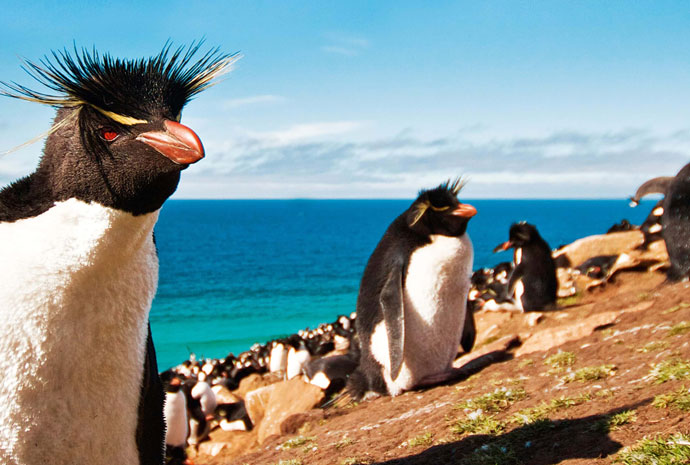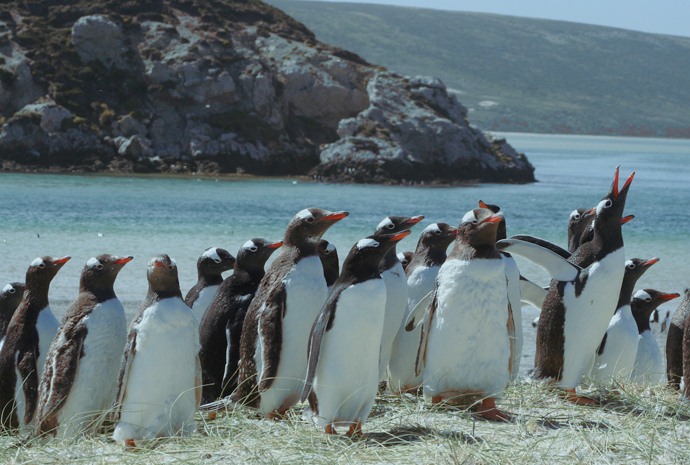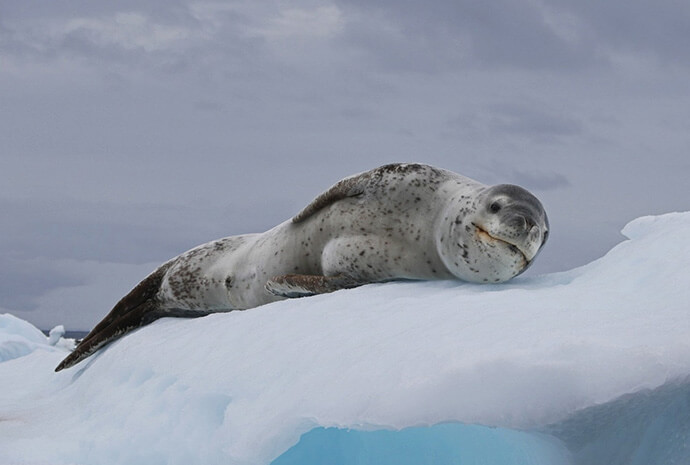
Antarctica Photography
There is nowhere on earth that is more photogenic than Antarctica, with its unique scenery and wildlife
Photography is therefore an activity in which everybody participates, whether they have the most advanced equipment or simply a point-and-shoot camera. Nevertheless, there are fundamentals to consider, both before travelling and during your trip.
Some of our team are photographic enthusiasts and have experienced the Polar Regions in full. If you would like us to share our firsthand advice or have any questions regarding photo opportunities or kit, please don’t hesitate to contact us.
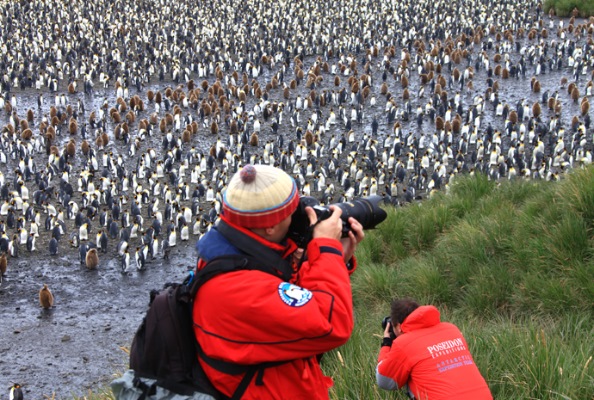
Be sure to take a good quality digital camera with you. An SLR with zoom lens is preferable, especially for wildlife shots; however all the principal manufacturers also offer super-zoom, automatic ‘bridge’ cameras and high-spec compacts for those who prefer an easier life! You will also find that fellow passengers are often willing to share their efforts. Spare batteries and chargers as well as memory cards are absolutely essential. If you do not take your own laptop or other device, make sure you have a couple of high density memory sticks, so you can download and share images whilst on board.
Many expeditions have dedicated photographic workshops as part of the optional activities, usually at no extra charge. These are well worth attending, since they are conducted by professionals who are also experts in polar and wildlife photography. Ask your WILDFOOT consultant about expeditions with photography workshops.
WILDFOOT Wildlife & Adventure Specialist
Lines are open from 9am -5.30pm
Monday - Friday
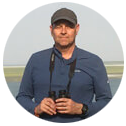
Simon Rowland
Managing Director
Antarctica Photography Tips
Packing your camera bag for a wildlife photography adventure
Watch our video, where professional wildlife photographer and journalist Tom Mason lets us look inside his camera bag and offers a few tips for what to take with you on your next wildlife photography adventure.Pre-Trip Considerations
- Consider the need for back-up equipment/redundancies. (Once you leave land there aren't a lot of options available to either repair or replace a piece of equipment if it goes wrong.)
- Think about weather protection - you are almost certainly going to encounter bad weather while photographing (rain, high winds, hail, sandstorms, sea spray). As a minimum you will need something to dry the camera and if you are not using pro grade equipment that is suitably weather sealed, be extra careful that the elements are not going to destroy the electronics.
- Filters - there have been a lot of forum discussions about whether you should take filters. I’m not a fan of UV filters as I don’t want to add an extra layer of (cheaper) glass in front of a (relatively expensive) lens. A circular polarizing filter, however, can be very useful for bringing out contrast and reducing glare when the sun is out (there are lots of reflective surfaces out here).
- Lens hoods - take them, use them. Religiously. They protect the lens front from many of the elements and prevent lens flare when the sun is at the wrong angle.
- Familiarity with your equipment - if you are going to treat yourself to that nice new camera or lens, bite the bullet with sufficient time to become familiar with how they work. Using their various functions and capabilities needs to become second nature. When an albatross is bombing past the side of the vessel, you don’t want to be trying to figure out where the focus point selector button is.
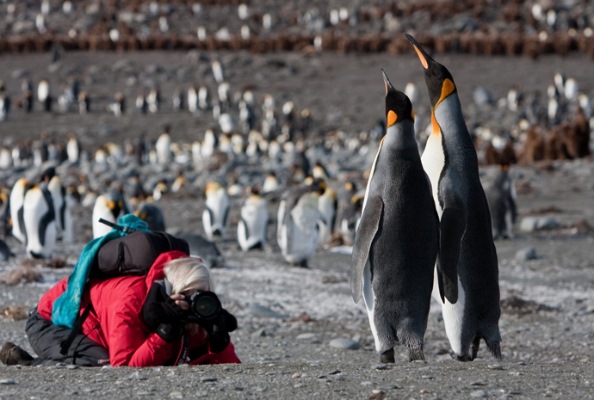
On Board Photography
- A feature of any ship-based trip between Ushuaia and Antarctica or any of the surrounding island groups is that your vessel will be accompanied by numerous small, large, and very large seabirds. While each present their own unique challenges, they all seem to possess an in-built ability to second guess you by changing direction just as you are about to press the shutter button.
- To combat this, the best tip (other than being familiar with the capabilities and functionality of your equipment) is to practice, practice, practice. In these days of digital photography, practice is almost free. Get used to tracking moving objects (try following cars as they approach you).
- Think about the background - the wake of the ship can be a useful background to create some interest rather than a white/grey sky.
- When photographing, spend some time looking at the patterns that the birds follow as they will tend to repeat them. This will show you where the best place to stand will be as your ideal location is to have the birds alongside the ship and moving at approximately the same speed as the ship - this makes it easier to track the bird and enhance the composition. As much as possible, stand on the rear quarter of the ship that is less windy. Not only do you have to deal with moving birds, you will be moving as well due to the wind and the effects of the ship’s movement. Minimize this as much as possible to increase the chances of a sharp picture.
- If the light allows it, increase your aperture (larger f-stop number) as this will give you a shot with more of the bird in focus.
- Go through your shots each day and delete those that are of no use, otherwise you will end up, not only with full memory cards, but also thousands of redundant images to sort out at a later date.
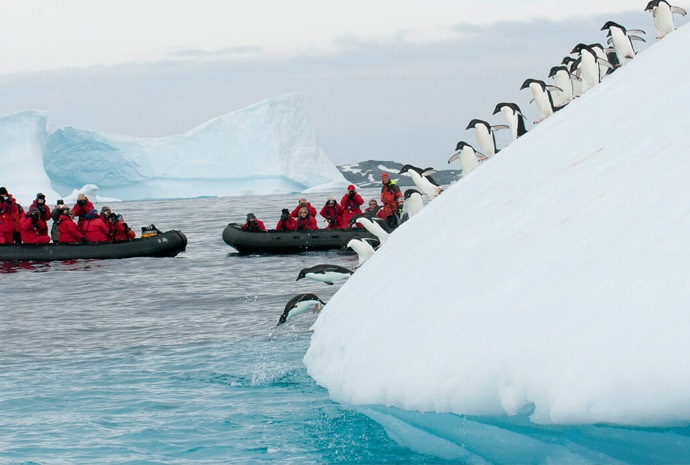
Last Minute WILDFOOT Latest Deals
Antarctica Classic
Up To 20% Discount!*
Book select departures by 30th April and receive up to 20% discount off select cabins!
*If booked by 1st May 2024
From Price £5,999
Members of The Adventure Travel Trade Association
WILDFOOT are proud to be members of ATTA. The ATTA community put effort towards nurturing, protecting and professionalizing the sustainable development of the adventure travel industry.
